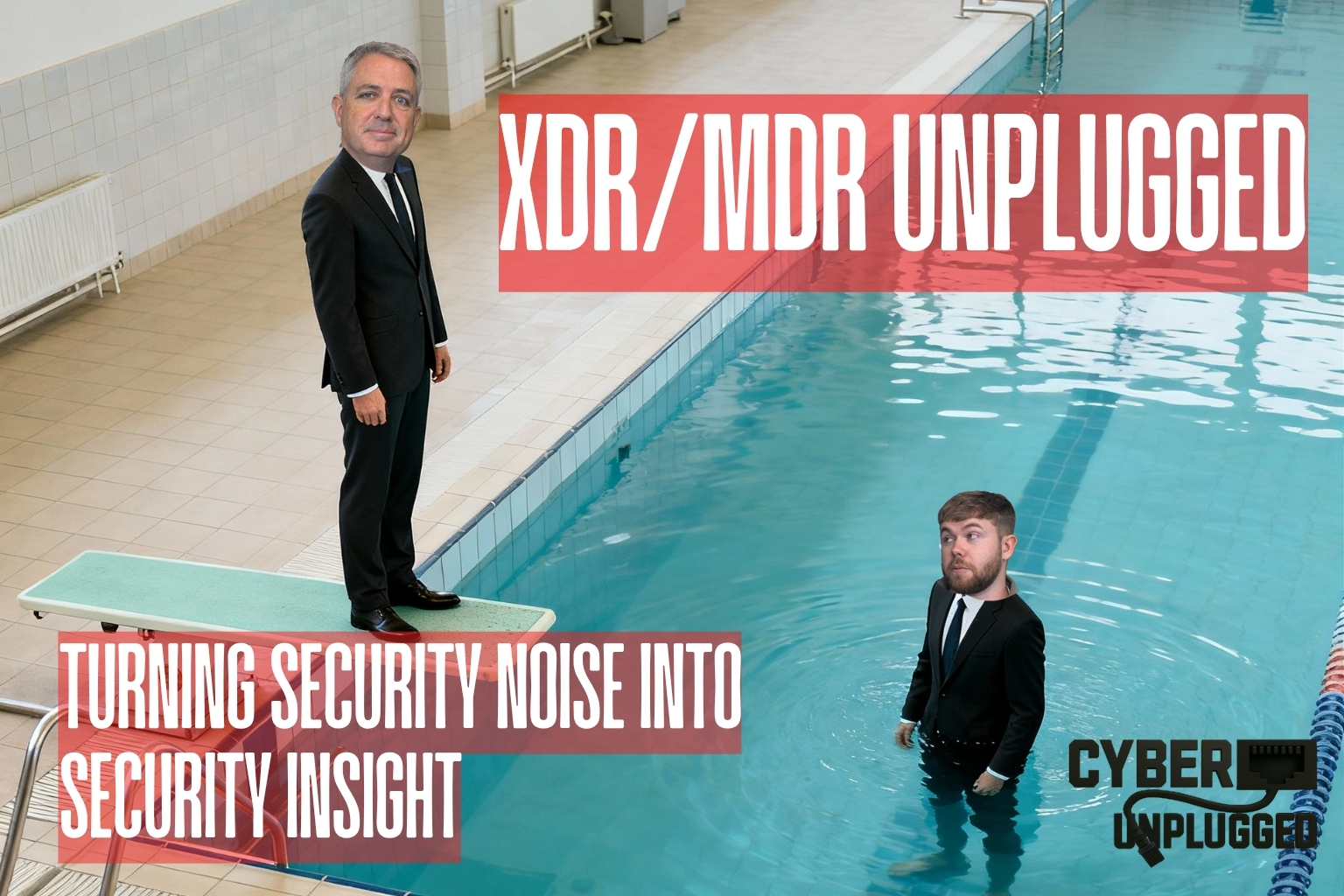XDR / MDR Unplugged – Turning security noise into security insight
XDR / MDR Unplugged – Turning security noise into security insight
If you’ve spent any time in cybersecurity lately, you’ll know it’s noisy. Alerts, dashboards, logs, telemetry, reports, “high severity” notifications that turn out to be someone rebooting a printer, it’s a lot. And of course, the truism holds – if everything is high-severity than nothing is high-severity!
Most organisations don’t actually suffer from a lack of data. In fact, it’s usually quite the opposite. Most are drowning in data and usually don’t have enough time, people or clarity to make sense of it all.
Step to the stage XDR and MDR. They might sound like new bands headlining EP that you’ve never heard of (but your kids already know about!), but they are in fact the key tools to help you turn that security noise into useful and actionable insight.
What is XDR?
XDR stands for Extended Detection and Response. Translation: it joins the dots across your security landscape.
Instead of your firewall, endpoint protection, email gateway, cloud platforms and logs all having separate conversations like tables at a wedding reception, XDR effectively works the room and pulls all the threads together.
It looks at signals across the likes of Endpoints, Network, Cloud Apps, Email and Identity and uses analytics to spot the patterns that humans would likely miss.
Because attackers don’t stay politely in one place. They move. They pivot. They crawl through your environment. And if your security tools aren’t talking to each other, you’ll only ever see fragments of the story. XDR gives you the full picture and, crucially, the ability to act on it quickly.
Where does MDR come in?
MDR is Managed Detection and Response, the managed bit being the key thing here. An expert driver for the XDR car. Let’s be real, not every organisation has a 24/7 security team. Or the time. Or the expertise. Or the caffeine tolerance.
Buying into an MDR service gives you a team of human analysts watching your environment around the clock, backed by the XDR platform. They investigate alerts, confirm whether something is actually malicious and take action – fast.
So, to be clear, XDR is the technology, MDR is the team that runs it effectively.
You can, of course, have XDR without MDR. But having both is like having the Formula 1 car and a world-class F1 driver. Otherwise, you’re driving it yourself or it’s sitting in the garage gathering data and dust.
Why does this matter for real organisations?
The threats are real and the business outcomes of missing them are very, very real and potentially existentially impacting for your organisation.
With an XDR/MDR, you can expect
Fewer missed threats
Faster response times
Less time wasted chasing false alarms
Reduced breach impact and cost
24/7 coverage without having to have your own SOC team
This should help everyone involved to sleep better and your IT manager might even stop stress-F5ing dashboards at two in the morning.
What’s the catch (because there’s always one)?
Tools alone don’t fix security (sing it with me choir – People/Process/Technology). You still need good identity management, proper network hygiene, clear incident response roles and occasional security fire drills. In other words, XDR + MDR enhance your security – they don’t replace thinking.
In conclusion
We're not in the age of “keeping the bad guys out” anymore. We’re in the age of detecting them fast and shutting them down hard. So, if your organisation wants to, lower cyber risk, reduce alert fatigue and move from reactive firefighting to proactive defence, XDR and MDR together are a powerful way to get there.
And if you’d like to talk about how to make that work in the real world (not the glossy brochure world) you know where to find us. Also, check out our Cyber Unplugged Episode 3 video that talks all about it! https://www.youtube.com/watch?v=Xet3Z838Kog







